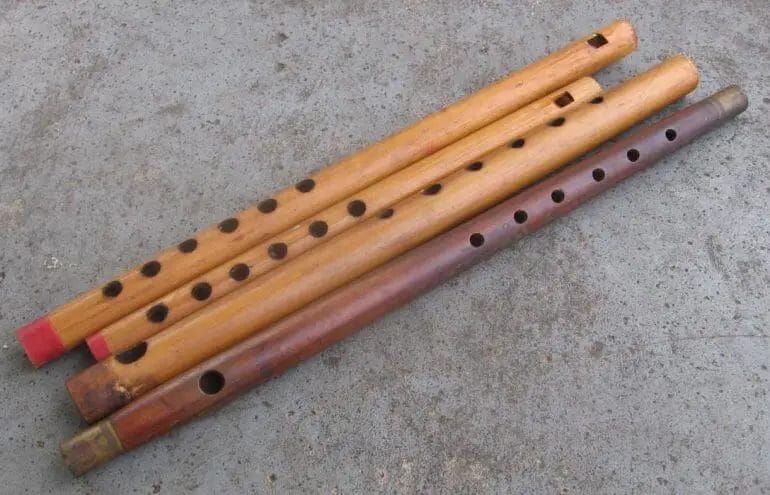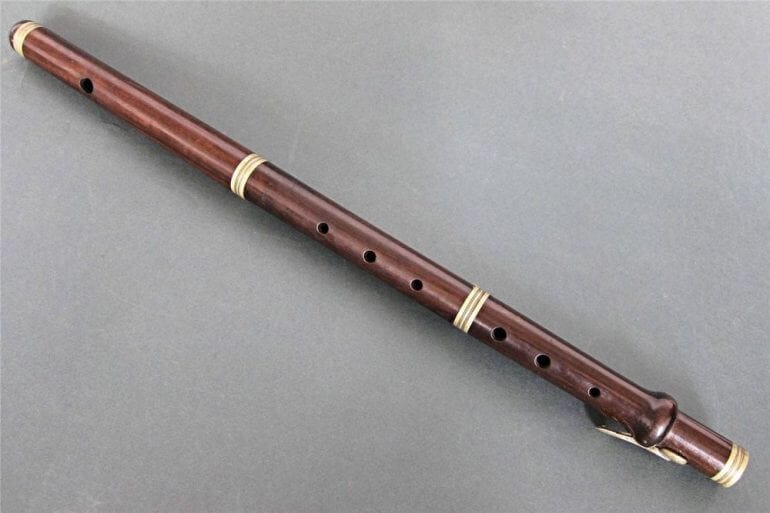Playing a wood flute is a beautiful and enchanting experience that allows you to create melodious tunes using a timeless instrument. The wood flute, also known as the wooden flute or Native American flute, has a rich history and produces a warm and soothing sound. Whether you are a beginner or have some experience with musical instruments, learning to play the wood flute can be a rewarding journey. In this guide, we will explore the basics of playing a wood flute and provide you with some helpful tips to get started.
One of the first steps in playing a wood flute is understanding its structure. Typically constructed from wood, the flute consists of a hollow tube with finger holes and a mouthpiece. To produce sound, you blow across the mouthpiece and cover or uncover the finger holes to control the pitch. It is important to familiarize yourself with the different finger positions and techniques to play different notes on the flute.

To begin playing, you need to establish the correct posture and positioning. Hold the flute with both hands, ensuring that your fingers cover the appropriate holes. Create a seal with your lips around the mouthpiece and blow gently across the opening. Experiment with the amount of air pressure to find the right balance and produce clear, resonant tones.
As you progress, you can explore various techniques to enhance your playing. Vibrato, for example, involves slightly fluctuating the pitch of a note by varying the air pressure. Tonguing techniques, such

Mastering the Basics: Learn How to Hold and Position the Wood Flute
Playing the wood flute is a beautiful and fulfilling musical experience. However, before you can produce enchanting melodies, it is important to master the basics, starting with how to hold and position the instrument correctly. This guide will walk you through the proper techniques to ensure a comfortable and effective playing experience.
1. Finding the Right Grip
The first step in holding the wood flute is finding the right grip. Start by holding the flute with your dominant hand, allowing your index finger to rest on the flute’s keys. Your thumb should be positioned underneath the flute to provide support and stability. Place your other fingers on the remaining keys, keeping them relaxed and slightly curved.
It is essential to maintain a light grip on the flute, avoiding any unnecessary tension. This will allow for fluid finger movement and better control over the instrument.
2. Proper Hand Positioning
Now that you have a secure grip on the flute, it’s time to focus on your hand positioning. Extend your fingers comfortably over the keys, making sure they are hovering just above the keys without pressing down. This will prevent accidental notes from being played while you’re not intentionally pressing the keys.
Keep your wrists relaxed and straight, avoiding any excessive bending or tension. This will help you produce clear and accurate notes while minimizing the risk of strain or injury.
3. Aligning the Flute
Proper alignment of the wood flute is crucial for achieving the best sound quality. Hold the flute horizontally in front of you, with the embouchure hole (the small hole you blow into) positioned towards your mouth. The keys should face up, parallel to the ground.
Ensure that your embouchure hole is aligned with your lips, allowing for a direct stream of air to produce a clear and resonant tone. Experiment with the angle of the flute to find the most comfortable and efficient position for you.
4. Finding the Right Posture
A good posture is essential for playing the wood flute effectively. Sit or stand up straight, allowing your shoulders to relax and your back to be aligned. This promotes proper breathing and helps you maintain a steady airflow.
Keep in mind that your flute should be at a comfortable height, allowing your arms to relax along your sides while still maintaining a proper grip and alignment. Adjust a music stand or use a supportive tool if needed to ensure a correct and comfortable playing position.
5. Practice and Patience
Learning how to hold and position the wood flute correctly requires practice and patience. Be sure to dedicate regular practice sessions to reinforce these techniques. Start with short practice sessions and gradually increase the duration as you become more comfortable.
Remember to listen to your body and take breaks if you feel any discomfort or tension. This will help prevent strain or injuries and ensure a positive learning experience.
Summary
Mastering the basics of holding and positioning the wood flute is essential for any aspiring flutist. By finding the right grip, maintaining proper hand positioning, aligning the flute correctly, adopting the right posture, and dedicating yourself to regular practice, you will be well on your way to becoming a proficient wood flute player. Enjoy the process, embrace the learning journey, and let the enchanting melodies flow.

Blowing Techniques: How to Produce Clear and Melodic Tones on a Wood Flute
Playing a wood flute can be a beautiful and enjoyable experience. However, producing clear and melodic tones requires proper technique and control over your breath. In this section, we will explore some essential blowing techniques that will help you achieve a beautiful sound on a wood flute.
1. Breath Control
One of the crucial aspects of playing a wood flute is mastering breath control. It is important to maintain a steady flow of air while playing, neither too weak nor too forceful. Here are some tips to improve your breath control:
- Start by taking deep breaths from your diaphragm rather than shallow breaths from your chest.
- Practice blowing gently into the flute, aiming for a smooth and consistent airflow.
- Avoid excessive tension in your neck and shoulders, as it can restrict the airflow.
- Experiment with different levels of breath intensity to find the sweet spot that produces the desired tone.
2. Embouchure
The embouchure refers to the position and shape of your lips and mouth while playing the flute. It greatly influences the quality of the sound produced. Here are some tips to achieve an optimal embouchure:
- Position the lip plate of the flute slightly below the center of your lower lip.
- Form a small, relaxed “O” shape with your lips, allowing the air to flow smoothly through the embouchure hole.
- Avoid biting down on the lip plate or clenching your jaw, as it can impede your ability to produce clear tones.
- Experiment with the angle and position of your embouchure to find the sweet spot that produces a rich and resonant sound.
3. Tonguing Techniques
Tonguing techniques help articulate individual notes and add clarity to your playing. Here are a few common tonguing techniques used in wood flute playing:
- Single Tonguing: This technique involves lightly touching the tip of your tongue to the roof of your mouth, behind your front teeth, before releasing it to articulate the note.
- Double Tonguing: This technique utilizes a rapid alternating motion of the tongue between the roof of the mouth and the tip of the tongue on the reed or embouchure hole.
- Flutter Tonguing: This technique creates a fluttering effect by rolling the “R” sound with your tongue while blowing into the flute.
4. Vibrato
Vibrato adds depth and expressiveness to your flute playing. It involves a slight oscillation in pitch to create a warm and shimmering sound. Here are some tips to develop your vibrato:
- Start by practicing a relaxed and controlled vibrato on sustained notes.
- Gently and evenly manipulate the pitch up and down by slightly varying the pressure and speed of your breath.
- Experiment with different speeds and depths of vibrato to find the style that suits your musical expression.
By mastering these blowing techniques, you can produce clear and melodic tones on a wood flute. Remember to practice regularly and be patient with yourself. With time and dedication, you will be able to achieve a beautiful sound that resonates with the soul.

Essential Fingerings: Unlocking the Key Notes on a Wood Flute
Learning to play a wood flute is a rewarding experience that allows you to create beautiful melodies and express your musical creativity. One of the first steps in mastering this instrument is to understand the essential fingerings for producing different notes.
Whether you are a beginner or an intermediate player, having a solid foundation of fingerings will enable you to navigate the flute’s range with ease and accuracy. In this section, we will explore the key fingerings that every wood flute player should know.
1. D
The D note is one of the most fundamental and frequently used notes on the wood flute. To play D, cover the first three holes with your fingers on the top hand, and leave the bottom hand open. This fingering will produce a clear and resonant D sound.
2. E
Next, let’s move on to the E note. To play E, lift the middle finger of the top hand, leaving the first and second holes covered. Keep the bottom hand open. This fingering will produce a bright and vibrant E sound.
3. F#
F# is another important note that is commonly used in various musical pieces. To play F#, cover the first two holes on the top hand and the first hole on the bottom hand. This fingering will produce a distinctive and rich F# sound.
4. G
G is a key note that is often played in different musical scales. To play G, cover the first hole on the top hand and the first hole on the bottom hand. The other holes should be left open. This fingering will produce a clear and resonant G sound.
5. A
The A note is another essential finger position to master on the wood flute. To play A, cover the first hole on the top hand and leave the bottom hand open. This fingering will produce a mellow and soothing A sound.
6. B
To play B on the wood flute, cover the first hole on the top hand and lift the middle finger of the bottom hand. This fingering will produce a bright and sweet B sound.
7. C#
C# is a unique note that requires specific finger placement. To play C#, cover the first hole on the top hand and the second hole on the bottom hand. Leave the other holes open. This fingering will produce a distinctive and resonant C# sound.
8. High D
Lastly, let’s explore the fingerings for the high D note. To play high D, cover all six holes on the top hand and keep the bottom hand open. This fingering will produce a clear and piercing high D sound.
By mastering these essential fingerings, you will be able to play a wide range of notes and confidently explore different musical compositions on your wood flute. Practice these fingerings regularly to improve your technique and develop a strong foundation for your flute playing journey.
Enhancing Your Skills: Tips for Practicing and Improving Your Wood Flute Playing
Playing the wood flute can be a delightful and rewarding experience. Whether you are a beginner or an experienced musician, there is always room to improve and enhance your skills. In this section, we will explore some tips and techniques that will help you practice effectively and take your wood flute playing to the next level.
1. Warm-up exercises
Before diving into complex flute pieces, it’s crucial to warm up your muscles and focus your mind. Start your practice session with some warm-up exercises specifically designed for the wood flute. These exercises can include simple scales, long tones, and lip flexibility exercises. Warm-up exercises not only prepare your body for playing, but they also help improve your tone and technique.
2. Practice scales and arpeggios
Scales and arpeggios are fundamental building blocks in music. Practicing scales in different keys and arpeggios will not only improve your finger dexterity but also enhance your understanding of music theory. Start with major scales and gradually move on to minor scales and more complex arpeggios. Remember to practice them slowly and accurately, gradually increasing the tempo as you become more comfortable.
3. Focus on tone production
Tone production is a crucial aspect of wood flute playing. To improve your tone, focus on your embouchure and breath control. Experiment with different lip positions and air speed to find the sweet spot that produces a clear and resonant tone. Practicing long tones and slow melodies can help develop a beautiful and consistent sound.
4. Study and learn new repertoire
Expanding your repertoire is an essential part of musical growth. Explore different styles and genres of music and challenge yourself to learn new pieces. Choose pieces that are slightly above your current skill level to push yourself and improve your technique. Take the time to study the musical structure, dynamics, and phrasing of each piece, and aim for expressive and nuanced performances.
5. Seek guidance from a teacher or mentor
A knowledgeable teacher or mentor can provide valuable guidance and feedback on your wood flute playing. They can help identify areas for improvement, offer technical advice, and introduce you to new musical concepts. Consider taking private lessons or joining a flute ensemble to learn from experienced musicians and gain inspiration from fellow players.
6. Record and evaluate your practice sessions
Recording your practice sessions can be a powerful tool for self-evaluation. Set up a recording device and listen back to your playing with a critical ear. Pay attention to intonation, rhythm, articulation, and overall musicality. Take note of areas that need improvement and make a plan to address them in future practice sessions.
7. Develop a consistent practice routine
Consistency is key when it comes to improving your wood flute playing. Set aside dedicated practice time each day or week and stick to your schedule. Even short practice sessions can be beneficial as long as they are focused and purposeful. Remember to balance your practice routine with rest and relaxation to avoid burnout.
8. Perform in front of an audience
Performing in front of an audience is an excellent way to test your skills and gain confidence. Look for opportunities to play in recitals, concerts, or even informal gatherings. Performing in public will help you develop stage presence, overcome performance anxiety, and refine your musical interpretation.
In summary, improving your wood flute playing requires dedication, practice, and a willingness to challenge yourself. By following these tips and techniques, you can enhance your skills and take your musical journey to new heights. Remember to enjoy the process and embrace the joy of making music with your wood flute.
FAQs
1. How do I play a wood flute?
To play a wood flute, follow these steps: Hold the flute horizontally with both hands, covering the holes with your fingers. Blow gently into the embouchure hole, adjusting the angle until you produce a clear sound. Use your fingers to open and close the holes to change the pitch. Practice different fingerings and techniques to create melodies.
2. What are some tips for playing a wood flute?
Here are a few tips for playing a wood flute: Practice proper posture and breath control. Start with simple melodies and gradually progress to more complex pieces. Experiment with different fingerings and techniques to discover unique sounds. Join a flute community or take lessons from a professional to improve your skills.
3. How can I take care of my wood flute?
To take care of your wood flute, remember these tips: Clean the flute after each use by wiping the surface with a soft cloth. Avoid exposing the flute to extreme temperatures or humidity. Oil the wood occasionally to prevent it from drying out. Store the flute in a protective case when not in use to prevent damage.
Conclusion
In conclusion, learning how to play a wood flute can be a rewarding and enriching experience. By following the proper techniques and practicing diligently, individuals can master the art of playing the instrument. The gentle and soothing tones produced by a wood flute have the power to captivate and enchant both the player and the audience. Whether you are a beginner or an experienced musician, playing a wood flute allows you to connect with the rich heritage and cultural traditions associated with this ancient instrument. So, pick up a wood flute, embrace the beauty of its sound, and embark on a musical journey like no other.